Business or Public Service?
Insights into the Unique Laws and Regulations Applying to the Postal Service
- Research and Insights Solution Center -
United States Postal Service Office of Inspector General
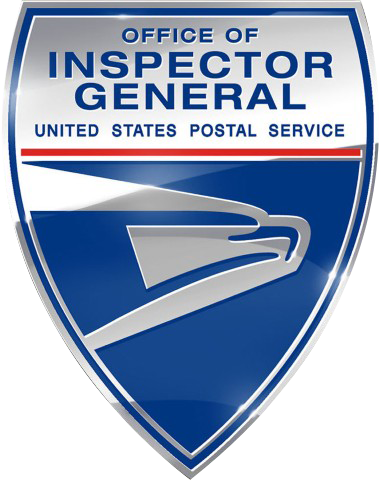

The United States Postal Service is entrusted with a critical mission: provide universal and affordable delivery service to every address in America.
For many years, the Post Office Department used public funding to fulfill this public mission. That changed in 1970. While USPS remained responsible for its public mission, the Postal Reorganization Act (PRA) restructured the agency and made it reliant on the sales of its own products and services — rather than congressional appropriations — for revenue.
In the ensuing decades, new laws further clarified, and sometimes constrained, the Postal Service’s obligations and operations. This evolving legal framework provides USPS with varying levels of control — often limited, sometimes medium, and occasionally high levels of flexibility – over key aspects of its operations.
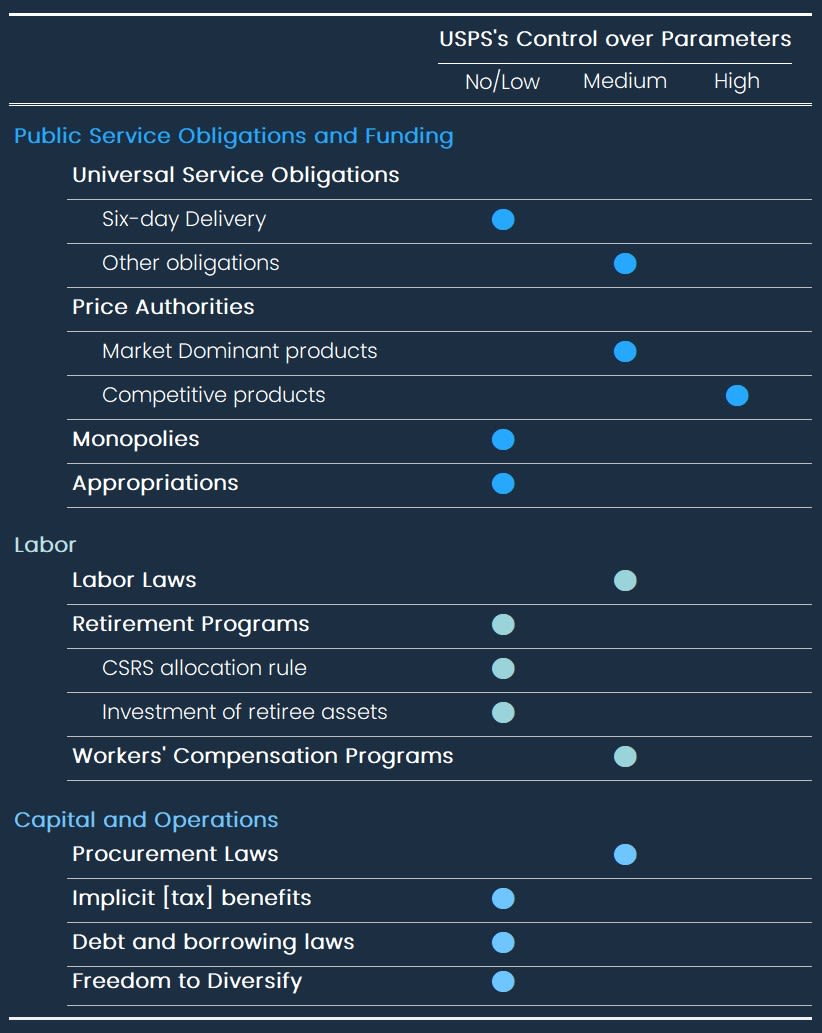
Over time, USPS transformed into a government entity with private sector flexibility operating within a public sector legal framework — a model that set it apart from other agencies, private carriers, and even posts around the world.
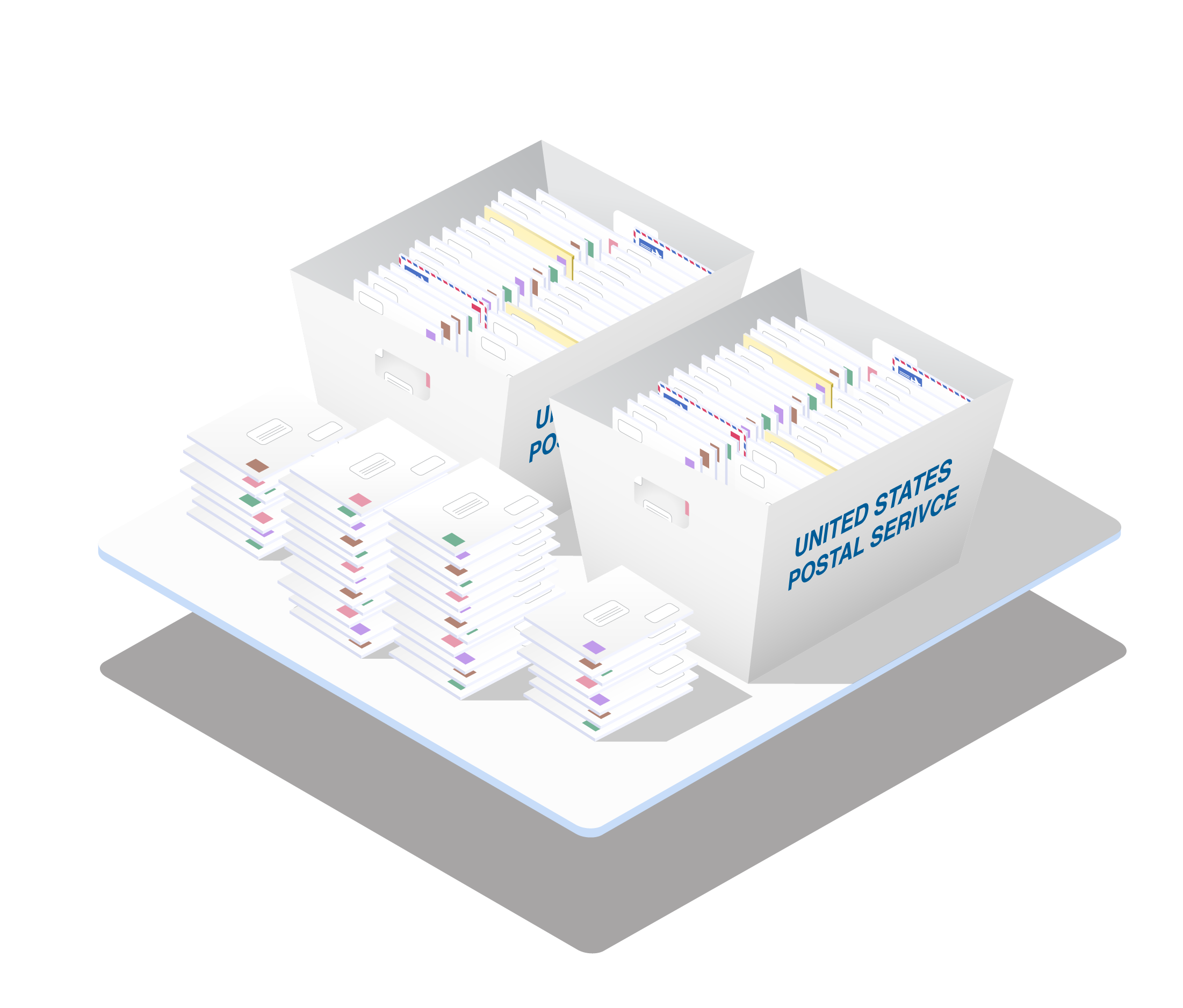
Laws Governing USPS's Public Service Mission
The Postal Service’s public service mission is encapsulated in its universal service obligation (USO) – a collection of requirements that ensure all postal users receive a minimum level of service at an affordable price. In the U.S., the Postal Service is the only carrier that must abide by the USO; private carriers are not subject to it. Without public service missions, a post or other carrier may decide to limit its services, deliver less frequently, or focus exclusively on its most profitable customers instead.
Delivery and Mailbox Monopolies
To support the cost of the USO, the Postal Service has something that private carriers do not have: Congressionally-mandated delivery and mailbox monopolies. The Private Express Statutes gave USPS the exclusive right to deliver non-expedited letters, and the mailbox monopoly allows only the Postal Service to deposit items into mailboxes.
In recent years, the value of the monopolies has been surpassed by the cost of maintaining the USO.
USO Legislation Over the Years
The PRA and other recent legislation created requirements related to facilities, service standards, and price increases, among others. For instance, all USPS facilities are required to provide ready access to essential postal services. The delivery of most letter products must meet service standards set by USPS in the Code of Federal Regulations, and price increases on letters were initially limited by the inflation rate by the Postal Accountability and Enhancement Act (PAEA).
Recent USO Legislation
In 2022, the Postal Service Reform Act (PSRA) codified a requirement to deliver mail six days a week and maintain an integrated network for letter and package deliveries. Before then, six-day delivery was mandated by Congress in annual appropriation bills.
Laws Impacting the Postal Service's Revenue
Unlike most federal agencies, the Postal Service receives very little funding from Congress to accomplish its public service mission. Instead, USPS is akin to private sector companies that rely on sales, borrowing, and interest income to fund their operations — but laws and regulations limit USPS's ability to set and raise its own prices.
Market Dominant Products
The Postal Service uses trucks and planes to move its letters, packages, and other mail products. PAEA divided these postal products into two categories: Market Dominant products and Competitive products. Roughly 95% of the Postal Service's total volume is comprised of Market Dominant products and include First-Class Mail (FCM), Marketing Mail, and Periodicals. If USPS would like to change prices on any of its Market Dominant products, PAEA requires it to submit a proposal to its regulator (the PRC). Price increases are limited by a price cap and the PRC must review and approve them before their implementation.
Competitive Products
Meanwhile, prices on USPS's Competitive products are not subject to a price cap; instead, they're subject to a price floor. The law prohibits USPS's Competitive products from being priced at an artificially low level since that could damage competition in the package market. It also proscribes USPS from using its Market Dominant products to cross-subsidize its Competitive products.
Negotiated Service Agreements
PAEA allows the Postal Service to negotiate a contract with a mailer (often called Negotiated Service Agreements, or NSAs) regarding customer-specific rates, fees, or terms of service. NSAs must be submitted to the PRC for review, and by law, the PRC must determine whether a proposed NSA would improve USPS's net financial position and/or enhance its operational performance.
A unique statutory framework also governs the Postal Service's ability to borrow money to fund its operations. Like other government agencies, USPS is allowed to borrow from the Federal Financing Bank by issuing debt obligations to the Treasury Department. When it does this, USPS can access a lower interest rate than the one available in the private debt market.
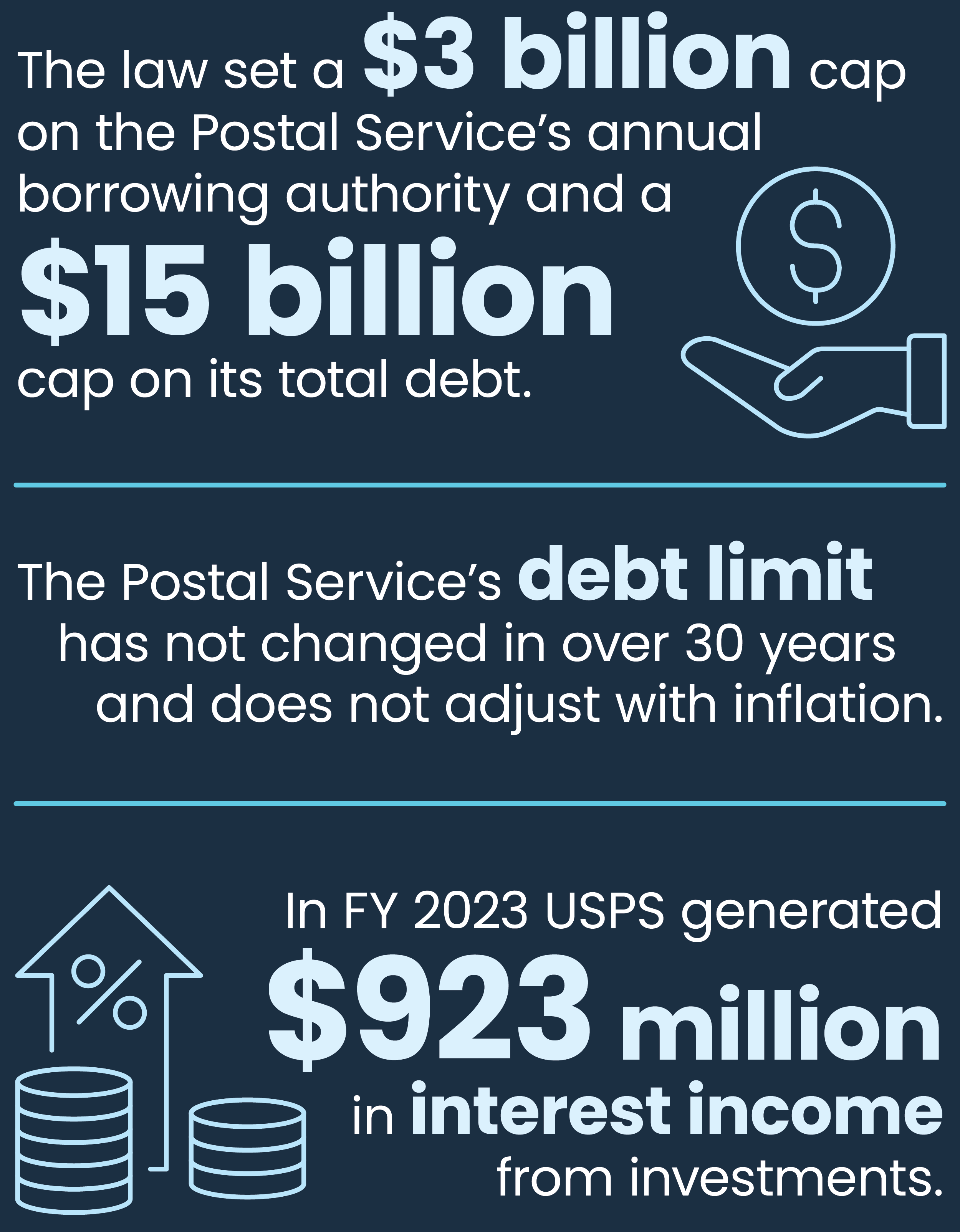
Meanwhile, private sector competitors are free to borrow money from a variety of sources (including traditional loans with a bank or lender) and do not have caps on their debt obligations.

Laws Impacting the Postal Workforce
With a workforce of more than 640,000 civil service employees, the Postal Service is one of the nation's largest civilian employers, and its labor costs represent nearly three-quarters of USPS's total operating expenses.
Collective Bargaining Agreements
Like many delivery companies in the private sector, USPS's unionized workforce has collective bargaining agreements that determine pay increases, cost of living adjustments, and working conditions for unionized employees. However, unlike private sector employees, USPS employees are not allowed to go on strike. Instead, the PRA established a binding arbitration process for resolving contract disputes.
Employee Salaries
The PRA requires the Postal Service to provide employee salaries comparable to those within the private sector. In practice, USPS uses its own Rate Schedule Codes in lieu of the General Schedule and Federal Wage System used by the rest of the federal government. It doesn't adjust wages to reflect local pay rates, though it is legally allowed to do so.
Workers' Compensation
Like other federal agencies — but unlike private sector companies — the Postal Service must comply with the Federal Employees' Compensation Act (FECA) when its workers are injured in the workplace. That means it doesn't have the option of selecting a workers' compensation system or a private insurer. Instead, USPS pays all claim costs from revenue (instead of congressional appropriations) and assumes all financial risk. A 2023 OIG audit found that USPS's annual workers' compensation costs remained 31-41% higher than costs in the private sector between 2017 and 2022.
The Postal Service also pays costs associated with employees who no longer work for the agency: that is, it pays retirement benefits for postal retirees. Unlike other federal agencies, USPS must make deposits into its retirement funds from revenue rather than congressional appropriations. And unlike private sector competitors, USPS is statutorily limited in its investment strategy.
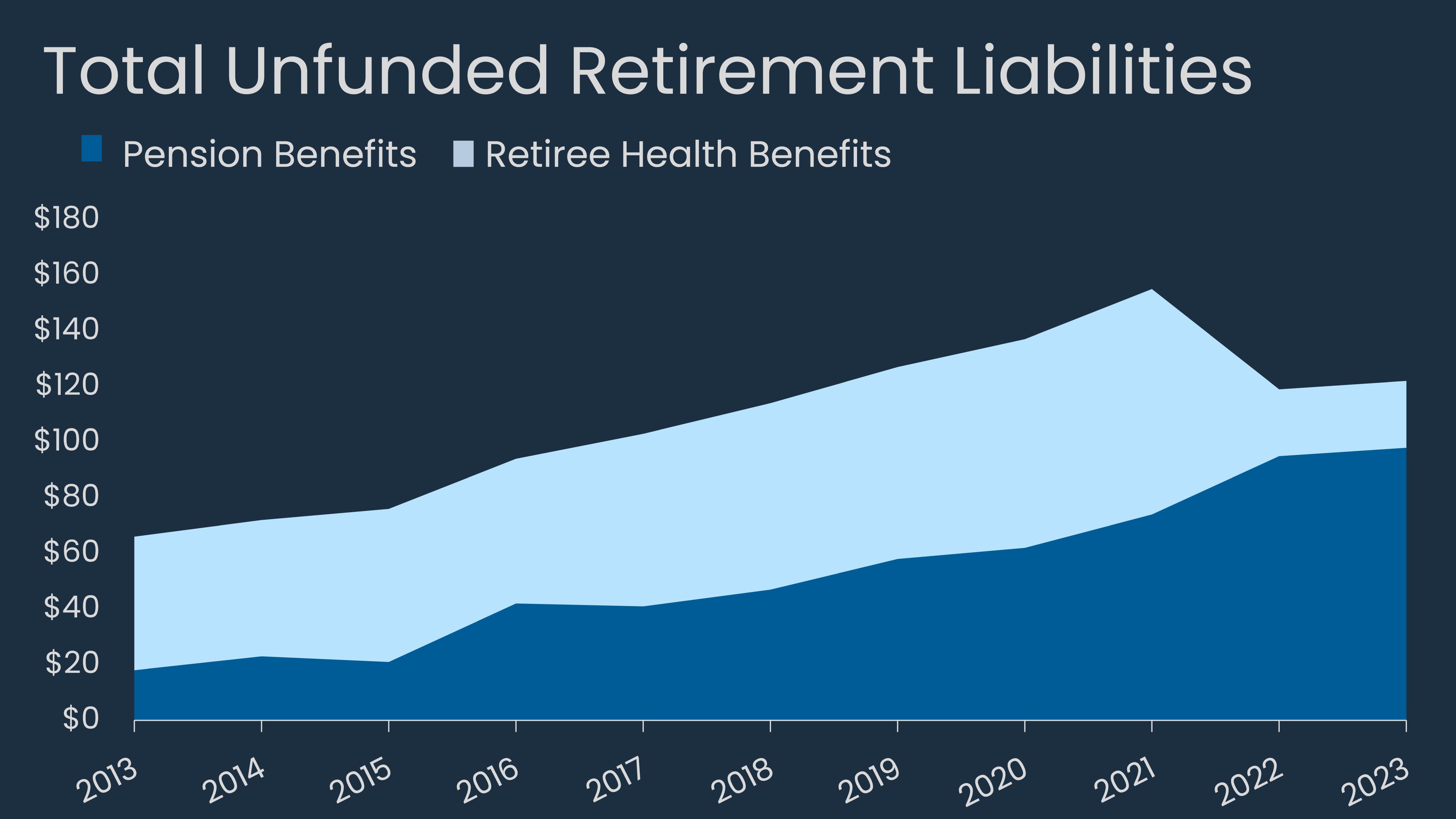
The OIG found USPS’s unfunded retirement liabilities increased steadily over the past decade and reached $122 billion in FY 2023.

Laws Impacting the Postal Service’s Operations
Approximately one-quarter of the Postal Service's budget sustains its operations. USPS uses this amount to procure services, goods, and facilities from a variety of suppliers and contractors who move mail, provide packaging materials, maintain postal buildings, and more.
Implicit Subsidies
The Postal Service enjoys implicit subsidies that arise from its status as a federal agency. This includes exemption from tolls, vehicle registration fees, state/local taxes, property/real estate taxes, and parking tickets for delivery vehicles. In 2022, the PRC estimated the value of USPS's implicit subsidies was a relatively negligible $39 to $74 million a year.
Acquisition Regulations
As a federal entity, USPS must follow procurement laws that aren't applicable to private sector carriers. For instance, USPS contracts trucking companies and air carriers to move mail. The Service Contract Act of 1965 requires USPS to hire trucking companies that offer fringe benefits and pay above set-wage rates. In addition, the U.S. Code requires USPS to seek proposals from certified air carriers before it may seek proposals from foreign air carriers when moving mail abroad.
Product Diversification
By law, the Postal Service is limited in the nonpostal products and services it’s allowed to offer customers. PAEA limited the scope of USPS’s offerings to postal services and a limited set of nonpostal services in 2006; more than 15 years later, PSRA extended the scope to allow services provided to any state, local, or tribal government. When it would like to test a new product, USPS is required to seek approval from its regulator before it can proceed.
Since 2016, the OIG identified USPS’s inherent tension between its public sector responsibilities and its private sector operations as a top management challenge. While USPS was structured to be a self-funded government entity in 1970, the rise in retirement liabilities, decline in mail volumes, and increase in package-market competition are straining the agency's financial viability. Recent legislative reforms — including financial relief in 2022 — created benefits and further operational restraints for USPS but left its general legal framework unchanged.
Over the years, the OIG has informed the evolving but recurring debate over USPS's unique hybrid status by examining legislative impacts on its revenue, operations, and future opportunities. Today's postal environment isn't the same one USPS faced in 1970, and the agency's long-term viability requires careful consideration to balance its public service mission against an increasingly complex market environment.










